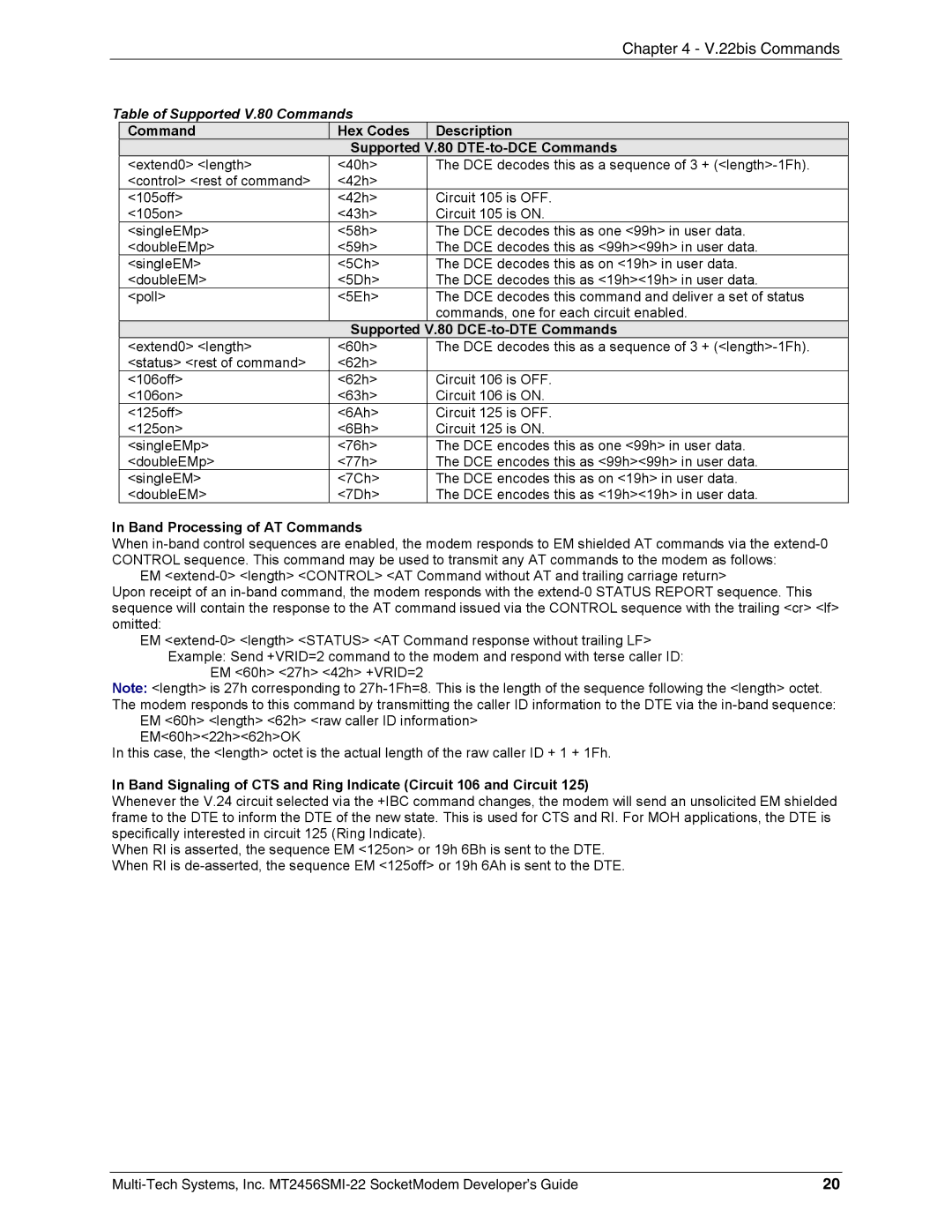|
|
| Chapter 4 - V.22bis Commands |
|
Table of Supported V.80 Commands |
|
| ||
| Command | Hex Codes | Description |
|
|
| Supported | V.80 |
|
| <extend0> <length> | <40h> | The DCE decodes this as a sequence of 3 + |
|
| <control> <rest of command> | <42h> |
|
|
| <105off> | <42h> | Circuit 105 is OFF. |
|
| <105on> | <43h> | Circuit 105 is ON. |
|
| <singleEMp> | <58h> | The DCE decodes this as one <99h> in user data. |
|
| <doubleEMp> | <59h> | The DCE decodes this as <99h><99h> in user data. |
|
| <singleEM> | <5Ch> | The DCE decodes this as on <19h> in user data. |
|
| <doubleEM> | <5Dh> | The DCE decodes this as <19h><19h> in user data. |
|
| <poll> | <5Eh> | The DCE decodes this command and deliver a set of status |
|
|
|
| commands, one for each circuit enabled. |
|
|
| Supported | V.80 |
|
| <extend0> <length> | <60h> | The DCE decodes this as a sequence of 3 + |
|
| <status> <rest of command> | <62h> |
|
|
| <106off> | <62h> | Circuit 106 is OFF. |
|
| <106on> | <63h> | Circuit 106 is ON. |
|
| <125off> | <6Ah> | Circuit 125 is OFF. |
|
| <125on> | <6Bh> | Circuit 125 is ON. |
|
| <singleEMp> | <76h> | The DCE encodes this as one <99h> in user data. |
|
| <doubleEMp> | <77h> | The DCE encodes this as <99h><99h> in user data. |
|
| <singleEM> | <7Ch> | The DCE encodes this as on <19h> in user data. |
|
| <doubleEM> | <7Dh> | The DCE encodes this as <19h><19h> in user data. |
|
In Band Processing of AT Commands
When
EM
Upon receipt of an
EM
EM <60h> <27h> <42h> +VRID=2
Note: <length> is 27h corresponding to
EM <60h> <length> <62h> <raw caller ID information> EM<60h><22h><62h>OK
In this case, the <length> octet is the actual length of the raw caller ID + 1 + 1Fh.
In Band Signaling of CTS and Ring Indicate (Circuit 106 and Circuit 125)
Whenever the V.24 circuit selected via the +IBC command changes, the modem will send an unsolicited EM shielded frame to the DTE to inform the DTE of the new state. This is used for CTS and RI. For MOH applications, the DTE is specifically interested in circuit 125 (Ring Indicate).
When RI is asserted, the sequence EM <125on> or 19h 6Bh is sent to the DTE. When RI is
20 |
